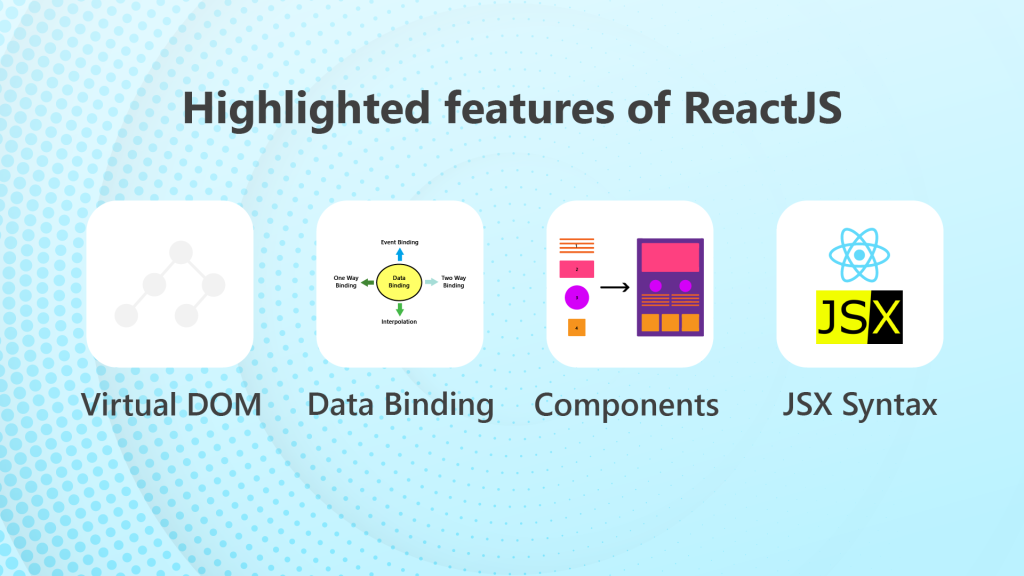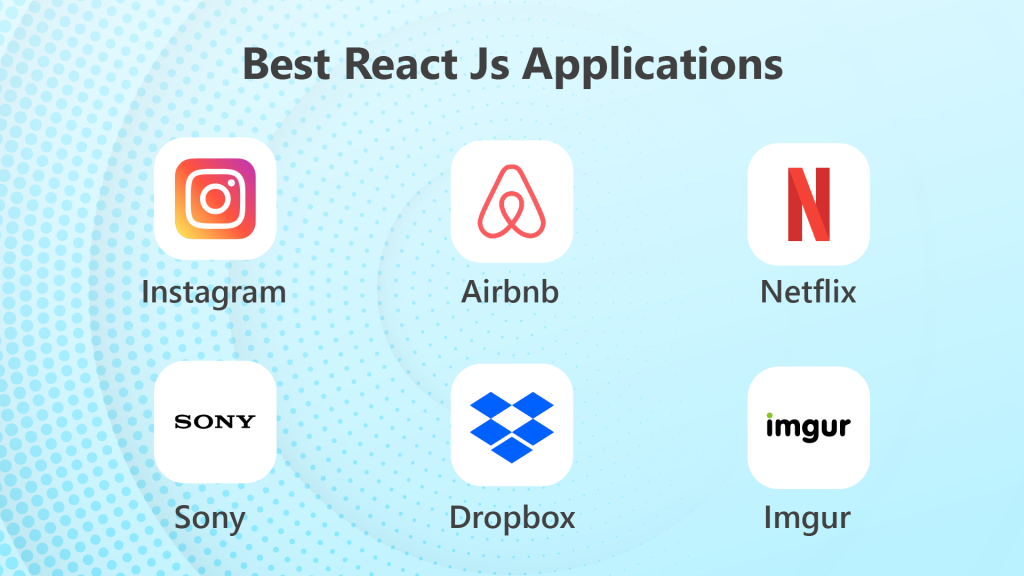Which Is Better: NodeJS or ReactJS?
When it comes to JavaScript, NodeJS and ReactJS are the two outstanding technologies that never fail to impress developers.
Join the DZone community and get the full member experience.
Join For FreeWho doesn’t want to see constant evolution in technologies that can bring ease to the development process?
You’d be glad to know that JavaScript is constantly evolving and bringing new advancements in the world of development.
When it comes to JavaScript, NodeJS and ReactJS are the two outstanding technologies that never fail to impress developers.
NodeJS is an open-source JavaScript runtime environment that helps in backend development, and ReactJS uses JavaScript to develop applications.
The catch is, which one should you use for app development when both technologies are in high demand and are widely used by developers?
To break it down, we’ve outlined a detailed comparison of these technologies. Let’s dive in!
An Introduction to NodeJS
NodeJS is an open-source JavaScript runtime environment. It’s used for back-end or server-side development, APIs, and mobile and web applications.
Often, many developers get carried away by the misconception that it’s either a framework or a programming language. In reality, it’s neither a framework nor a programming language.
NodeJS is based on the V8 Chrome JavaScript Engine that works with non-blocking I/O models and helps to develop robust applications.
Besides, here are a few highlighted features of NodeJS:
Highlighted Features
Event
NodeJS is based on an event-driven architecture comprising process modules. This event-driven architecture helps to develop efficient and fast Web applications.
Non-blocking
The notable reason behind NodeJS’ efficient development of applications is its asynchronous version or non-blocking I/O, which doesn’t let the code block the execution.
Also, it helps developers manage concurrent requests by entrusting JavaScript functions, which makes the code cleaner.
If you’re wondering how asynchronous input/output works, Let’s take an instance:
Consider that you’re developing an online shopping portal. If there’s no I/O non-blocking feature, it’ll definitely end up blocking the requests for adding products until the products get added to the cart and, eventually, the user checks out.
Single-Threaded
The standout feature of NodeJS is that it’s not multi-threaded; it’s single-threaded. It implies that it can efficiently handle one process at a time, which doesn’t let the requests get queued up for processing.

How Can NodeJS Be Ideal to Develop Applications?
Packaged Modules
The enormous capability of millions of packaged modules in NodeJS adds leverage to this technology. In addition, it has a Common Line Interface to access and directly install during the development process, which is a huge asset as it ends up saving development time.
Server Side
As NodeJS is used in the server-side development of applications, it adequately manages multiple concurrent requests by utilizing its non-blocking I/O feature.
It works best when you need to gather data from multiple source centers with varying response times.
Dynamic Database Management System
You can estimate the size of massive database sets. Also, it’s beneficial when you’re developing any type of application that’s explicitly dependent on managing huge hunks of datasets.
In addition, it supports HTTP compatibility than separate events.
Which Applications Work the Best With NodeJS?
The best-suited applications with NodeJS are real-time chats, collaboration tools, APIs, websites, and many more.
The best examples are Uber, Walmart, and PayPal.
An Introduction to ReactJS
ReactJS is a JavaScript library that’s ideal for developing single-page applications. Its declarative nature makes it versatile to create reusable user interface components.
Generally, React components are not that easy to reuse, which makes them stand out as the foundation for developing interactive, large, and single-page applications.
Its virtual DOM is best for keeping track of all the changes that have been made in the components.
It just updates the DOM, which ends up saving time and also limits the high-end process of re-rendering data changes.
The components in React applications render small, reusable chunks of HTML, allowing complex applications to be built simply by nesting these components within each other.
Highlighted Features of ReactJS
Virtual DOM
React is based on a virtual DOM that ends up minimizing re-rendering. Unlink real DOM; when the data gets changed in a component, it just updates and reuses the pre-existing HTML components. it’s a huge time saver.
Data Binding
It supports a unidirectional flow of data, where the data flows in one direction. When the state changes, the UI gets updated, and when the state of the application changes, you just have simple functions to get started with the UI updates.
Components
The components are modular pieces of code that make it quite easy to write and maintain the application and can be reused.
Furthermore, you can divide the components into much smaller components that are also referred to as child components.
JSX Syntax
JSX is a JavaScript syntax extension that is similar to HTML. It enables you to write markup in JavaScript rather than web views. It becomes relatively easier to keep good track of the page as it’s all accumulated in one place.

How Can ReactJS Be Ideal to Develop Applications?
SEO-Friendly
Despite rendering a decent number of JavaScript-based web applications, most web indexes believe that it often gets difficult to browse through them.
However, with ReactJS, you can easily develop lightweight applications, and when ReactJS is executed on the server, the virtual DOM gets rendered and transmits you to a regular page.
Robust
The virtual DOM is the most significant feature, as it stores all the necessary components, responds to every change made in the DOM, and updates it diligently.
Also, it consumes less time, eliminates tedious DOM tasks, and makes the web page highly robust.
Architecture
With ReactJS, you can easily create segments and access them later or reuse them. Hence, it wouldn’t access PolymerJS or Shadow DOM, as you can easily directly incorporate them in ReactJS.
Which Applications Work the Best With ReactJS?
Any user interface that requires flexible updates can be used with ReactJS. Also, you can develop various robust mobile applications with React.
The best examples are Instagram, Airbnb, Netflix, Sony, Dropbox, Imgur, and many more.

ReactJS vs. NodeJS: Which Outperforms the Other?
Performance
ReactJS
React’s virtual DOM functionality is best to handle frequent UI changes, and each DOM has a copy of its virtual DOM.
However, if you’re thinking that it’s too good to believe and there’s no setback, the catch is that it can’t directly alter the UI.
React merely refreshes the virtual DOM with each UI update to get into resonance with the standard DOM. It helps to scrutinize the modifications made in the standard DOM, and then it just adjusts the UI after analyzing the amends.
Often, it hampers performance with UI rendering. However, it does get fixed with community support.
NodeJS
NodeJS app’s performance has never been a bummer.
In fact, its high performance at low development cost makes it indifferent and stands out. Its reduced response time has been significantly dropped, resulting in a quick page load. All the credit goes to its savior, event-driven architecture!
Microservices
ReactJS
Microservices help to break down the scalable frontend into smaller chunks that can be further worked on by a different group of developers until the code pieces are prepared to be used in the applications.
Also, each team of developers delivers various kinds of different materials. If you develop any website with ReactJS, you’ll observe that it can be segmented into plethora of features, which can be efficiently managed by several teams, such as DevOps, front-end, and back-end teams.
Furthermore, React eliminates direct connectivity in micro frontends by allowing indirect communication. It also makes the entire process of transmitting data and callbacks convenient.
NodeJS
In NodeJS, the microservice goes into resonance with it by allowing the development of applications at ease, resulting in the development of highly scalable and high-performing applications.
The ideal combination of NodeJS and microservice effectively manage multiple concurrent requests without any disruption.
With microservices, various applications can be updated and scaled, and common challenges such as high expenses, app crashes, and API integration can be avoided.
Community Support
ReactJS
Undeniably, React’s community is gigantic and ensures that they offer frequent updates as they encourage developers to work diligently and ensure that the application doesn’t malfunction.
React has been used in many top-notch applications such as Airbnb, Netflix, Uber, PayPal, and many more.
NodeJS
The community of NodeJS is active and supportive, too; they are consistent in fixing bugs and addressing loopholes in the technology.
NodeJS has been used in a few high-end applications such as Instagram, LinkedIn, GoDaddy, and many more.
Types of Applications
ReactJS
React works best for single-page applications. It wouldn’t be wise to recommend React for developing large-size applications as it revolves more around the user interface.
If you’re looking to develop large-size applications with React, it’s wise to use it along with some other technology tool.
NodeJS
NodeJS is based on the V8 JavaScript engine and has some incredible features, such as non-blocking I/O. You can preferably develop data-streaming applications and real-time chat applications.
Learning Curve
ReactJS
ReactJs is based on JavaScript, which most developers are well acquainted with, making it easier to get well-versed in this language.
The learning curve of React is less steep, making it an ideal library to learn and develop applications as it uses JSX and has extensive documentation.
NodeJS
It works entirely against the learning curve of NodeJS. Although the learning curve of NodeJS isn’t steeper, initially, it’s a bit difficult to work with NodeJS to develop applications. The non-blocking I/O code makes it relatively difficult to incorporate.
| Parameters | ReactJS | NodeJS |
| Purpose | ReactJS is specifically used to build the user interface of websites. | NodeJS is used for the backend development of the website. |
| Development Process | It takes the support of NodeJS to compile the JavaScript codes and develop UI test cases. | It’s based on Google Chrome’s V8 engine and uses non-blocking I/O. |
| Features | It handles data and makes API calls. | It manages authentication, database access, and browser requests. |
| DOM | It doesn’t use any DOM. | It uses a virtual DOM to escalate the speed of the application. |
| Architecture | It has a relatively complex architecture. | It’s relatively simple and easier. |
| Microservice | It’s not easy to write microservices. | It’s easier to write microservices as NodeJS is lightweight. |
| Library | It has an extensive open-source library. | It has an open-source library and is backed by Facebook. |
Conclusion
By the end of the blog, you must have deciphered the literal applications of these technologies.
NodeJS is best for developing server-side or back-end web applications. Conversely, ReactJS is best for the front-end development of web applications.
Both technologies are excellent in their ways and are best for developing web applications, making them a great combination to be incorporated together for app development.
Most companies have used both efficient technologies together to develop a robust, high-performing application.
For instance, Netflix is the best streaming application. Ever wondered how their app works flawlessly? It’s because of the integration of both technologies, making it highly efficient.
Published at DZone with permission of Vipin Maru. See the original article here.
Opinions expressed by DZone contributors are their own.

Comments